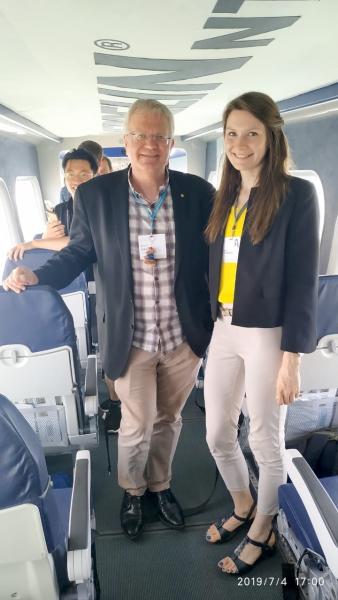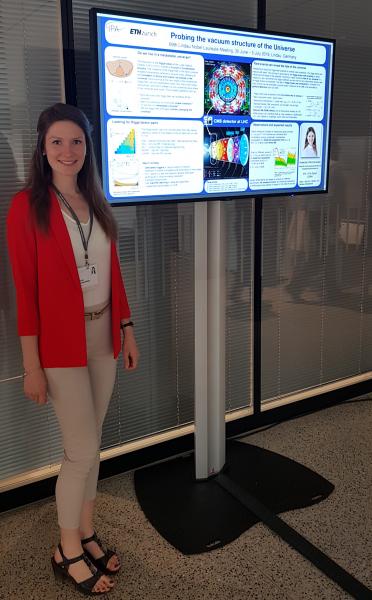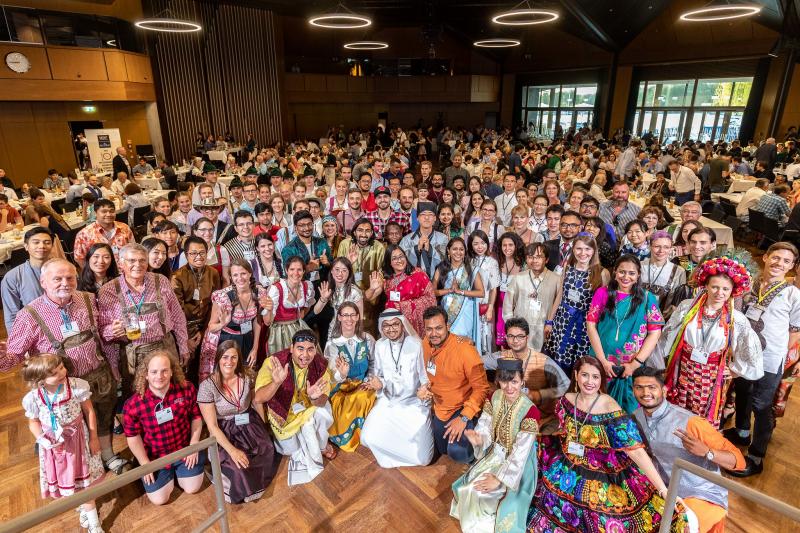Lindau is an exceptional little island in beautiful lake Constance, where once a year since 1951 Nobel laureates gather to meet bright young scientists from all over the world. This year’s the 69th Lindau Nobel Laureate meeting was dedicated to Physics. 39 Nobel laureates and 580 young scientist from 89 countries gathered together to, as the slogan of the meeting reads, “educate, inspire and connect”.
I was selected to present my research for the CMS experiment at CERN to the Nobel laureates and my fellow participants. It was very nice to see other young scientists working in different fields being so interested in the research we do at CMS. I shared with them the latests results on the studies of the Higgs boson, searches for dark matter and physics beyond the Standard Model, and many more. In my electronic poster, ‘Probing the vacuum structure of the Universe’, I showed how at CMS we are trying to understand the evolution and the future of the Universe by searching for very rare events produced at the LHC where a pair of Higgs bosons is created.
I also had a chance to talk to David Gross, one of the founders of the Standard Model, a theory that governs particle physics. We discussed the ongoing experimental preparations for future particle accelerators and detectors, including the current huge effort to upgrade the CMS detector for the extremely challenging conditions of the High Luminosity LHC (HL-LHC) at CERN. It was interesting to learn about Prof. Gross’s hopes and views on the future of particle physics.
During this week, I was very lucky to not only engage in conversations with Nobel laureates but also participate in additional partner events. I had a chance to attend a science dinner sponsored by Mars, Inc. The topic was the desperate situation the oceans on Earth are facing due to human-caused damage, and what are the best ways to save them. Mars, Inc, showed the first results on their project to restore coral reefs, discussed the future directions of work, and shared their views on how each and every one of us can help the planet.
Another very memorable experience was a Zeppelin flight over beautiful lake Constance and Lindau island with the Nobel laureate Brian Schmidt. During this flight Prof. Burkard Baschek from the Helmholtz Association taught us about how his team uses Zeppelin NT for his oceanic research, and shared the first findings of his expedition Clockwork Ocean.
At the end of the week, we celebrated the diversity of this unique meeting with a Bavarian night where people wore national costumes. Being originally from Russia, I chose to wear a dress that has a style and design of famous Russian blue-and-white porcelain, called “Gzhel”.


In summary, the Lindau Nobel Laureate Meeting was certainly the most inspiring, educational and unforgettable experience of my scientific career. It was a great pleasure to represent the particle physicists community at CERN at this event. I am very happy to share my personal highlights from this unique event in this blog post and my interview with science comedian Brian Malow. I would also like to share the link to the Lindau Nobel Mediatheque where one can find the recordings of all talks that took place starting from the beginning of this meeting in 1951.
The views expressed in CMS blogs are personal views of the author and do not necessarily represent official views of the CMS collaboration.

